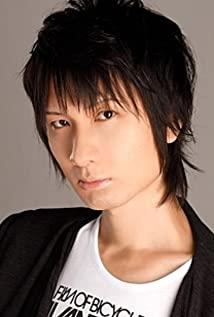I think I watched 12 episodes in one day when I was in junior high school. Now I almost forgot. I just started reading the original novel, so I thought about the novel and animation. I watched a few episodes without thinking about the animation. S), I finished reading "Seven Dead Men" by Nishizawa Yasuhiko on the way, and then finished the animation. The feeling after reading the novel is found in the comments of the original novel next door. Here, we mainly discuss the modification of the original plot in the animated version.
There are still many changes to the animation plot, and I will talk about it little by little.
First, the animation version added a lot of scenes to Akasawa. At the beginning, the one who shook hands with the male protagonist in the hospital should have been Kaze, but the animation was changed to Akasawa. It seems that the animation team intends to match the male protagonist × Akasawa. , In the last co-host chapter, it was also revealed through Sugiura Noguchi that the male protagonist was Akasawa's favorite. Originally, I felt that there was no such meaning in the novel. In the sequel S, there is still the candy of the male protagonist × Ming. The animation's emphasis on Akasawa has also made many viewers fall in love with Akasawa.
Second, the eighth episode swimsuit back. I really admire Japanese animation's obsession with swimsuits, and even in such gloomy works, "eight episodes of welfare since ancient times" are also required. But that's not the point. This episode also made a classmate who died in the dormitory in the novel die prematurely, and honorably became the "Swimsuit Return to the Dead", and he was probably the only case of the deceased who died outside the city. It was agreed that he would not die if he went out of the city? As a result, the explanation given in the next episode was that his death had been decided in the city. This explanation is actually very thief. It has seized the loopholes in the setting, and it has the taste of brushing the ball. It has been on the verge of violating the setting. According to this statement, as long as you have stayed in the city, even if you die outside the city, it can also be interpreted as "in the city for reasons known or unknown anyway, death has already been decided." It’s fine outside” isn’t this setting completely abolished?
Also, in this episode, the male protagonist and his party met Ming who was on vacation at a relative's villa, and everyone still played together. This completely conflicted with the plot of the novel's sequel S. Probably the animation team didn't expect 010 to take this blank. Come to write the sequel, 010 didn't think about the animated version when he wrote S. It's okay to be a parallel world anyway.
By the way, S is a scumbag.
Third, the plot of the co-hosting chapter has been changed quite a bit. Sugiura incited everyone to besiege Ming, and the wind turned black and suspected that the male protagonist was "dead". These are all plots not in the animated version, and these plots also made the ending more exciting. Poor Feng Jian is still cold in the end, I remember that Feng Jian still survived in the novel.
View more about Another reviews











